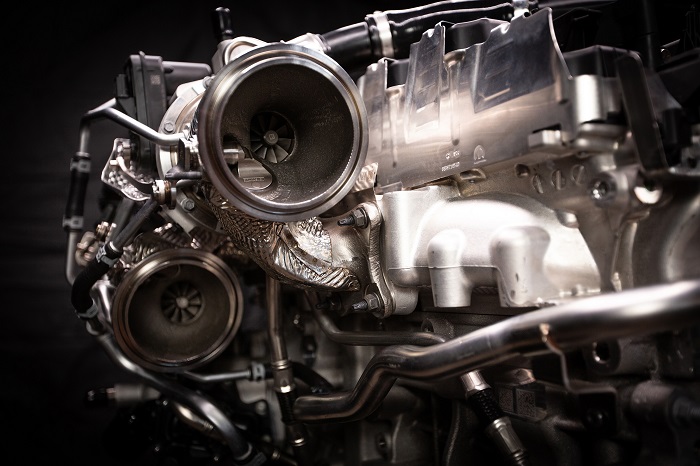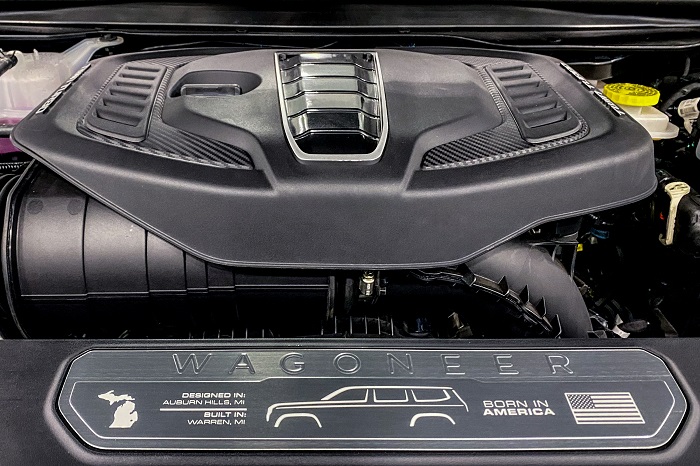Analysis. The new Hurricane twin-turbo six-cylinder is stunning in its power and efficiency, but many are skeptical, saying it’s too small for serious work trucks.

GM has its turbo four for the Silverado, and Ford has a 2.7 twin turbo pulling the F-150, and they do well—though the Ford seems quite thirsty when towing. But GM and Ford still have V8 choices, while indications so far are that Ram will end with the sixes. (Some do believe the 6.4 V8 will remain on the Ram 2500 and 3500.)
Would a different inline six family with a different vintage name be better? It could be dubbed the Hemi Six for those who recall the Australian inline sixes, which went up to 4.5 liters (265 cid) compared with the Hurricane Six’s 3.0 liters (183 cubic inches). Unlike their Aussie predecessors, they would be coupled to a (single) turbocharger and perhaps a hybrid transmission to build enough torque.

The added displacement, yielding sixes up to 4.0, 4.2, or 4.5 liters—would give Ram a relatively unstressed powertrain. The 4.0 and 4.2 sizes would bring up associations with the strong, powerful AMC/Jeep inline sixes.
A larger displacement engine with more low-end torque, achieved through a longer stroke, would give the Ram more of a truck-engine feel, and might also be used in the heavy duty Rams. Especially with a cast iron block, these would be a better work-truck option than the Hurricane family.
It would add to Ram’s “Pro Master” image to have special heavier duty engines for those who want to tow a boat or trailer to the lake without splashing out on a diesel. It would be a truck that could be used for mudding and such, too. Most buyers of vehicles that size expect old-school inline-6 stump pulling torque. It’s not about having a nose-heavy V8 under the hood, it’s about having torque and balance—for many, at least.
Is any of this practical?
Let’s look at bore and stroke for some key historical engines, keeping in mind that even the famed AMC straight six started out as a 3.2-liter!
| Engine | Bore | Stroke |
|---|---|---|
| 4.0 (232) | 3.88 | 3.4 |
| 4.2 (258) | 3.75 | 3.9 |
| 265 Hemi | 3.91 | 3.68 |
| Hurricane | 3.31 | 3.54 |
Unfortunately, a 3.31 inch bore would require an absurd stroke to reach even 4.0 liters; a 3.9 inch stroke, the longest in this group of engines, would only bring us up to 200 cubic inches (3.3 liters)—a good, sturdy V6 displacement in Chrysler history, probably not the association Ram would want.
For best results, the bore would also have to be increased, and that might prove to be quite expensive since the current Hurricane was designed to be compact and lightweight. It‘s likely the stroke is as big as it’s going to get without a hefty block redesign and an engine that’s (externally) just too large. For that matter, changing either the bore or stroke would throw off the optimization that was a hefty part of the GME in the first place.
Still, it does leave hope of at least a small increase in stroke. The 3.54 inch stroke is quite small for a torque-biased engine; it was likely chosen to keep the engine under 3.0 liters for countries where displacement is taxed, to allow for high revving, and because it left the combustion chamber the same as the well-optimized 2.0.
If the stroke could be lengthened, perhaps the resulting engine would be seen as better for trucks… because there does seem to be a perception gap among those who are looking not at torque numbers, but at displacement; and who are concerned about the long range lifespan of a twin-turbo engine in truck duty. One may even wonder if some sort of eight-cylinder is feasible using the combustion chamber design of the GME or GSE series—small stroke and all.
Discover more from Stellpower - that Mopar news site
Subscribe to get the latest posts sent to your email.
